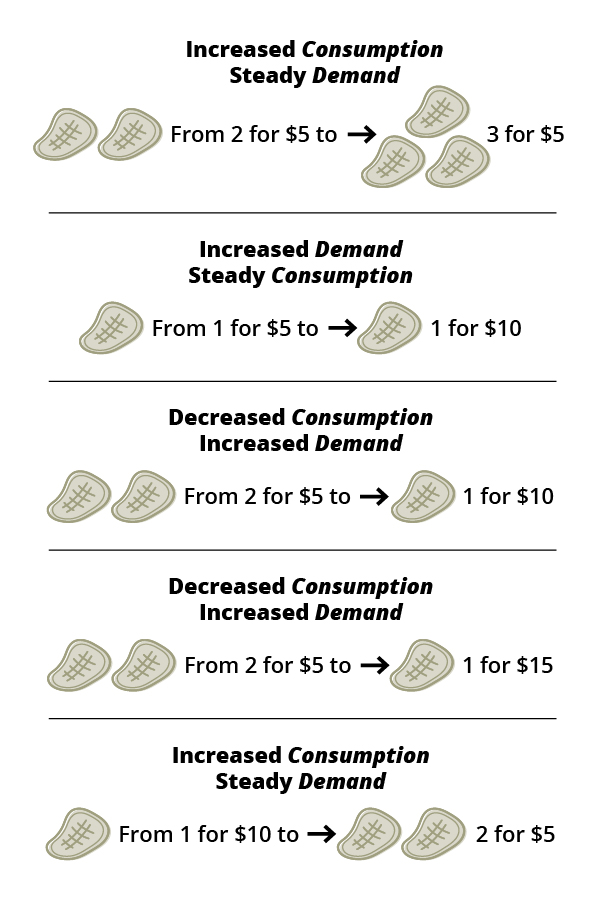New Beef Campaign Celebrates the Milestones in Life
Beef Checkoff-funded Beef. It’s What’s For Dinner. has executed many successful and iconic advertising campaigns in its 31 years, with many becoming a lasting part of American culture. Throughout the years, Beef. It’s What’s For Dinner. has undergone various updates and adaptations to stay current with changing consumer preferences, demand drivers and market trends. And that innovative mindset has not changed with its latest advertising campaign, “Together We Bring More.”
To continue with the visionary reputation that sets Beef. It’s What’s For Dinner. apart, “Together We Bring More” is forming a deeper emotional connection with audiences by celebrating life’s milestones and focusing on how beef can transform our experiences, big or small, into meaningful moments. From a first job promotion to a welcome-home party, all of these memorable events can be more valuable with beef.
This campaign also has the ability to communicate messages that focus on beef’s eating experience, nutrition, how it’s raised and grown, convenience and versatility – all areas that Checkoff-funded research has identified as directly driving consumer demand for beef.
RESEARCH METHODOLOGY
Beef. It’s What’s For Dinner. leveraged the power of research to ensure this campaign is relevant, targeted and effective, ultimately maintaining an efficient use of producers’ Beef Checkoff investments.
To gain a better understanding of the consumer target audience, Beef. It’s What’s For Dinner. hosted six focus groups to gather feedback on the campaign’s concept and other key insights, like how beef is associated with memories of comfort and bonding with others. “Beef moments” were discussed in the focus groups and included celebrations and special occasions like Sunday dinners, backyard BBQs and Taco Tuesdays. Beef. It’s What’s For Dinner. found that special occasions and meals are often associated with beef. Participants also agreed that beef could fit into everyday moments and make those moments more special.
This research was critical in validating the advertising concepts and messages for the campaign launch in April 2023.
DEFINED CONSUMER GROUP
Beef. It’s What’s For Dinner. is using Checkoff-funded consumer segmentation research to target consumers based not only on demographics but also psychographics and behaviors, like personality traits, values, attitudes, interests and lifestyle choices. By understanding these factors, Beef. It’s What’s For Dinner. can reach and connect with consumers on the channels where they get their information.
Behavioral data research helps Beef. It’s What’s For Dinner. understand how consumers interact with the brand. By analyzing this data, Beef. It’s What’s For Dinner. can identify consumer behavior patterns and trends and use that information to identify the best marketing tactics.
CAMPAIGN IMPLEMENTATION
With the support of science-backed research, this campaign uses a storytelling approach, featuring content in photography, video, audio and digital advertising formats. This way, consumers can see themselves, their families and their friends within the content and create that emotional connection.
This three-year campaign started off by focusing on beef’s eating experience and how consumers enjoyed time together over the summer months. Beef nutrition content will be added to the campaign in July and August, along with content about how cattle are raised and grown in August and September.
This informational and stimulating content will be delivered across various platforms, including online digital, social media, streaming radio, billboards and even on broadcast TV. “Together We Bring More” TV advertisements will be featured on the Food Network, which reaches approximately 85 million households in the U.S., and on Fox Broadcasting during Major League Baseball.
Influencers will also play a key role in this campaign, showcasing how “together we bring more,” whether that be a more meaningful experience, nutrition or industry. To kick off these efforts, Beef. It’s What’s For Dinner. is working with food influencers to create content that features beef recipes for different-sized gatherings. Beef. It’s What’s For Dinner. will also work with chefs to develop recipes and get an inside look at how beef brings them together with their families and friends outside of their restaurants.
OPTIMISTIC FUTURE
Because “Together We Bring More” is a three-year campaign, Beef. It’s What’s For Dinner. has the ability to optimize and grow campaign messaging and compile a library of creative assets like never before. “Through this storytelling approach, consumers can learn more about what beef means to them and share their own stories,” said Sarah Reece, senior executive director of brand marketing at the National Cattlemen’s Beef Association. “We hope to engage consumers in a whole new way and establish a two-way conversation.”
“Together We Bring More” will show relatable content directly to consumers, illustrating that beef is not just for special occasions but makes every day, meal and moment better.”

 Today’s consumers have a vast array of choices in an extremely competitive protein market. To help make beef the consumer’s first choice, the Beef Checkoff drives beef demand through promotion, research and education.
Today’s consumers have a vast array of choices in an extremely competitive protein market. To help make beef the consumer’s first choice, the Beef Checkoff drives beef demand through promotion, research and education.